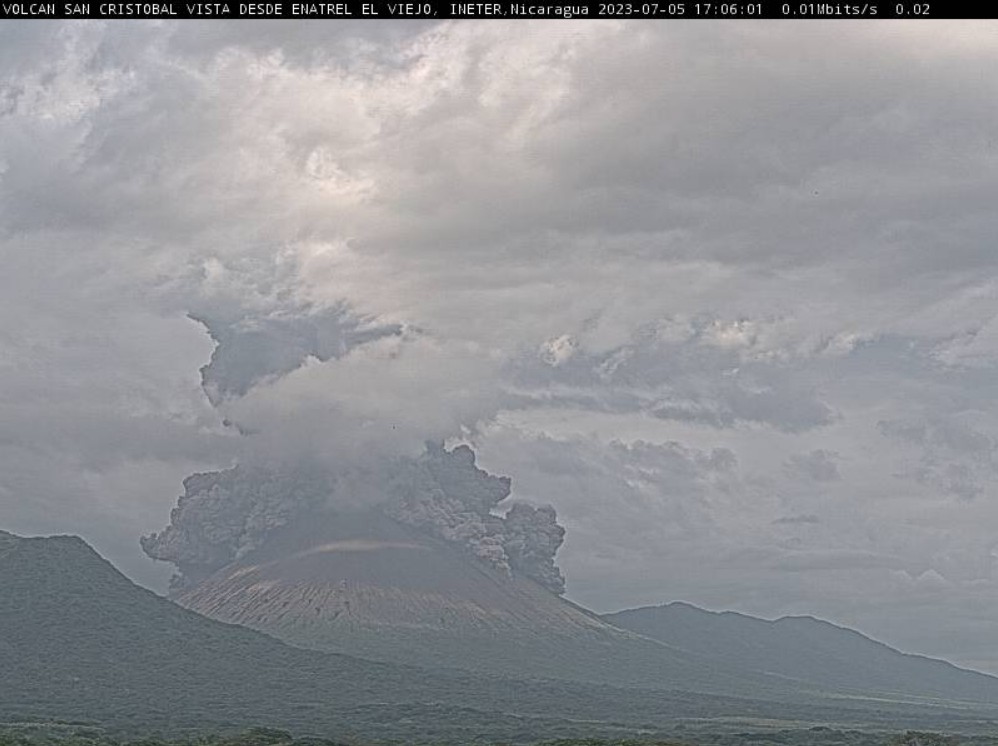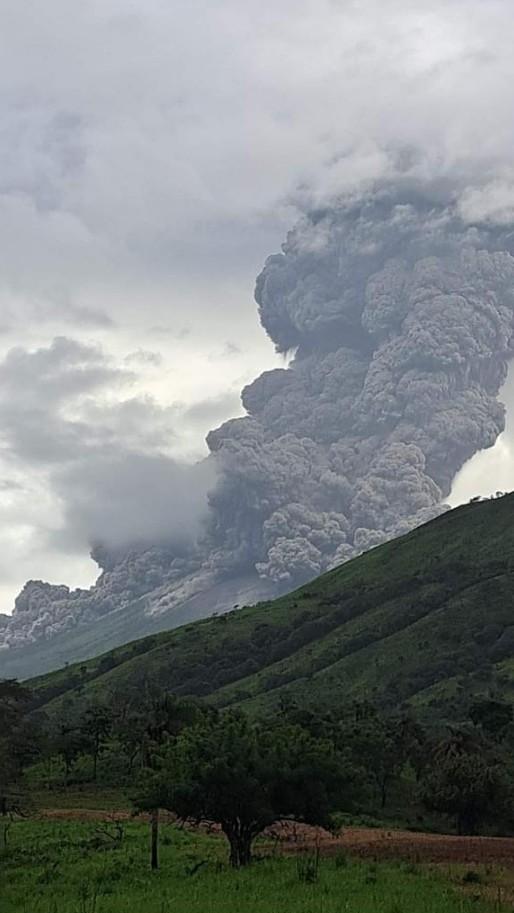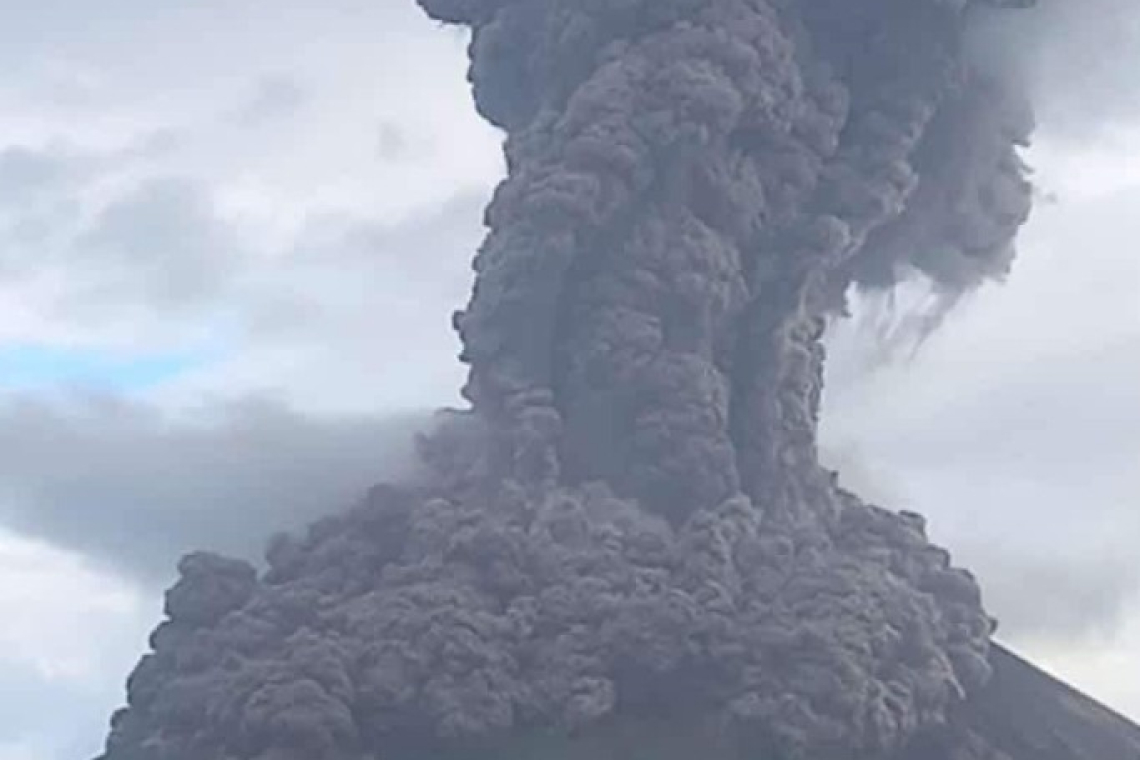Nicaragua’s San Cristobal volcano erupted on July 5, 2023, producing pyroclastic flows and huge amounts of ash.
The eruption generated concern among the authorities and nearby population, according to local media reports.
The Nicaraguan Institute of Territorial Studies (INETER) has intensified monitoring of the volcano to assess its behavior and guarantee the safety of nearby population.


The last eruption of this volcano took place on June 26, 2022, producing gas-and-ash plume that rose 1.5 km (4 900 feet) above the crater.
Geological summary
The San Cristóbal volcanic complex, consisting of five principal volcanic edifices, forms the NW end of the Marrabios Range. The symmetrical 1 745 m (5 725 feet) high youngest cone, named San Cristóbal (also known as El Viejo), is Nicaragua’s highest volcano and is capped by a 500 x 600 m (1 640 x 1 970 feet) wide crater.

El Chonco, with several flank lava domes, is located 4 km (2.5 miles) W of San Cristóbal; it and the eroded Moyotepe volcano, 4 km (2.5 miles) NE of San Cristóbal, are of Pleistocene age.
Volcán Casita, containing an elongated summit crater, lies immediately east of San Cristóbal and was the site of a catastrophic landslide and lahar in 1998. The Plio-Pleistocene La Pelona caldera is located at the eastern end of the complex.
Historical eruptions from San Cristóbal, consisting of small-to-moderate explosive activity, have been reported since the 16th century. Some other 16th-century eruptions attributed to Casita volcano are uncertain and may pertain to other Marrabios Range volcanoes.2








